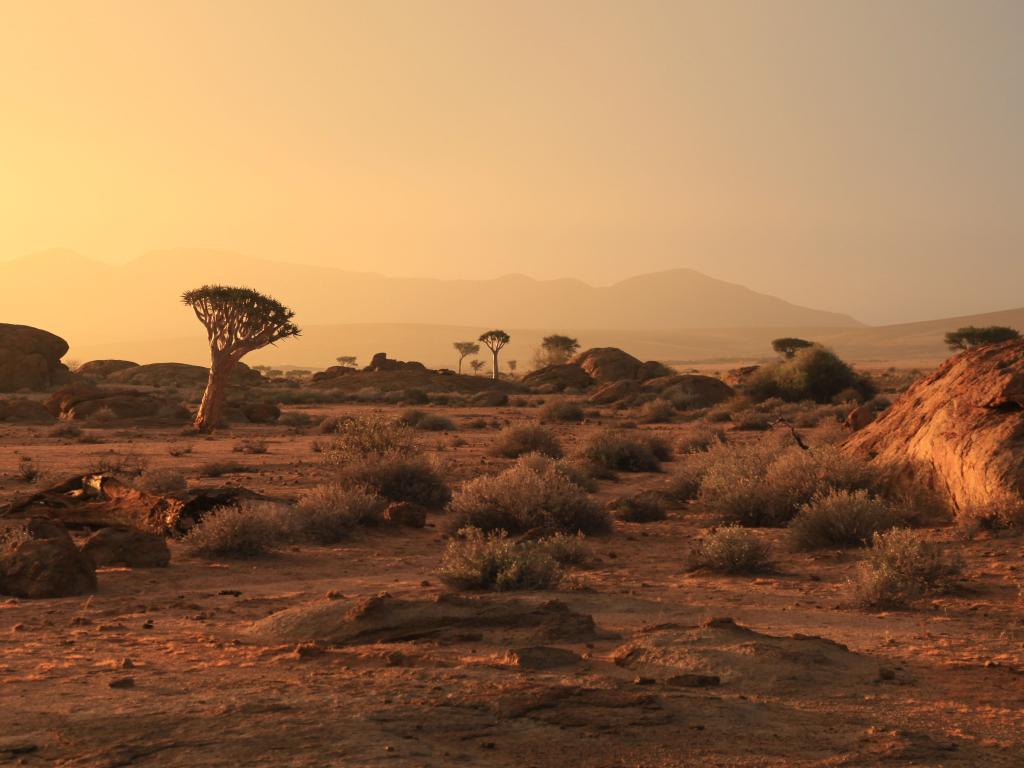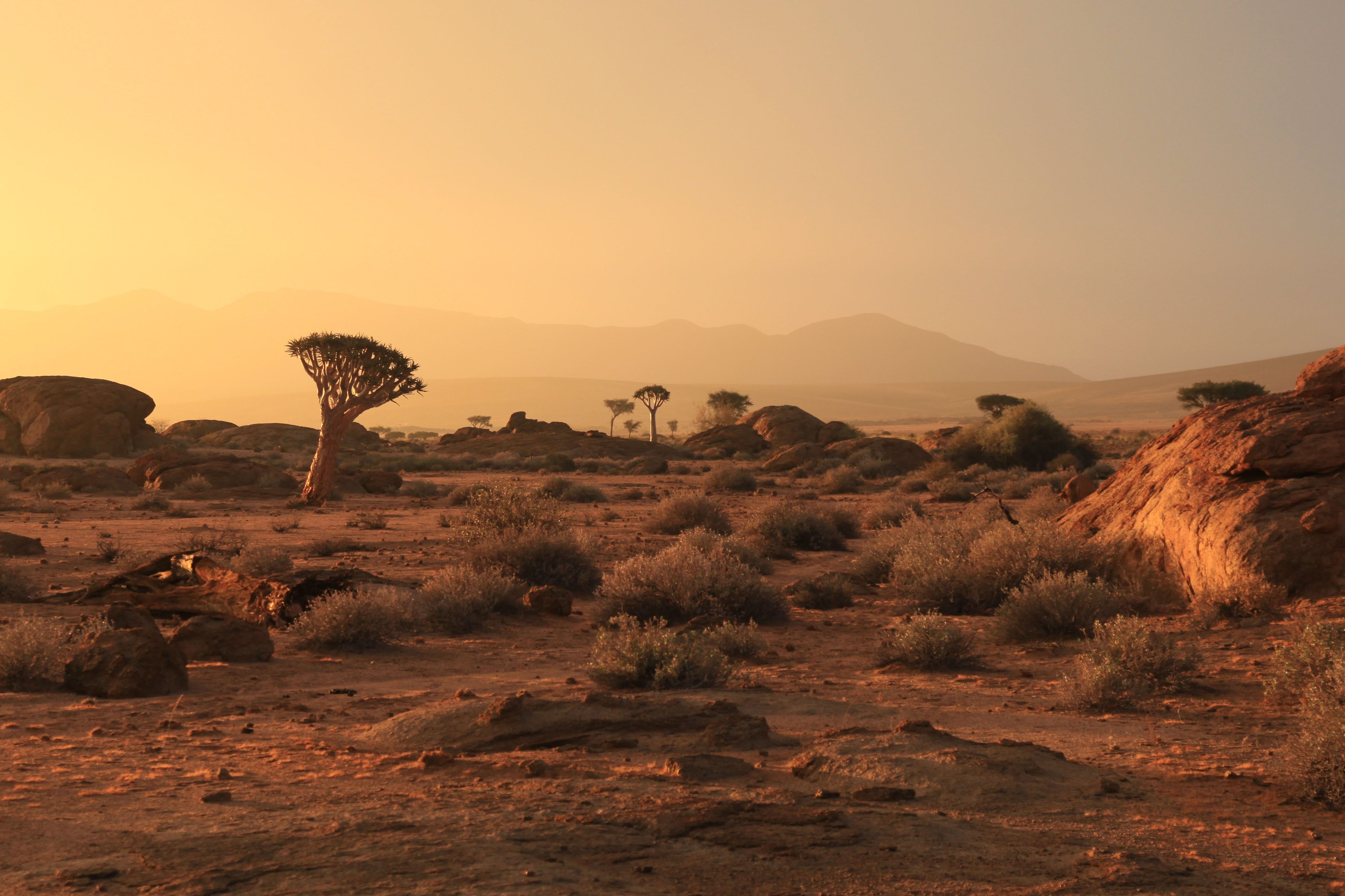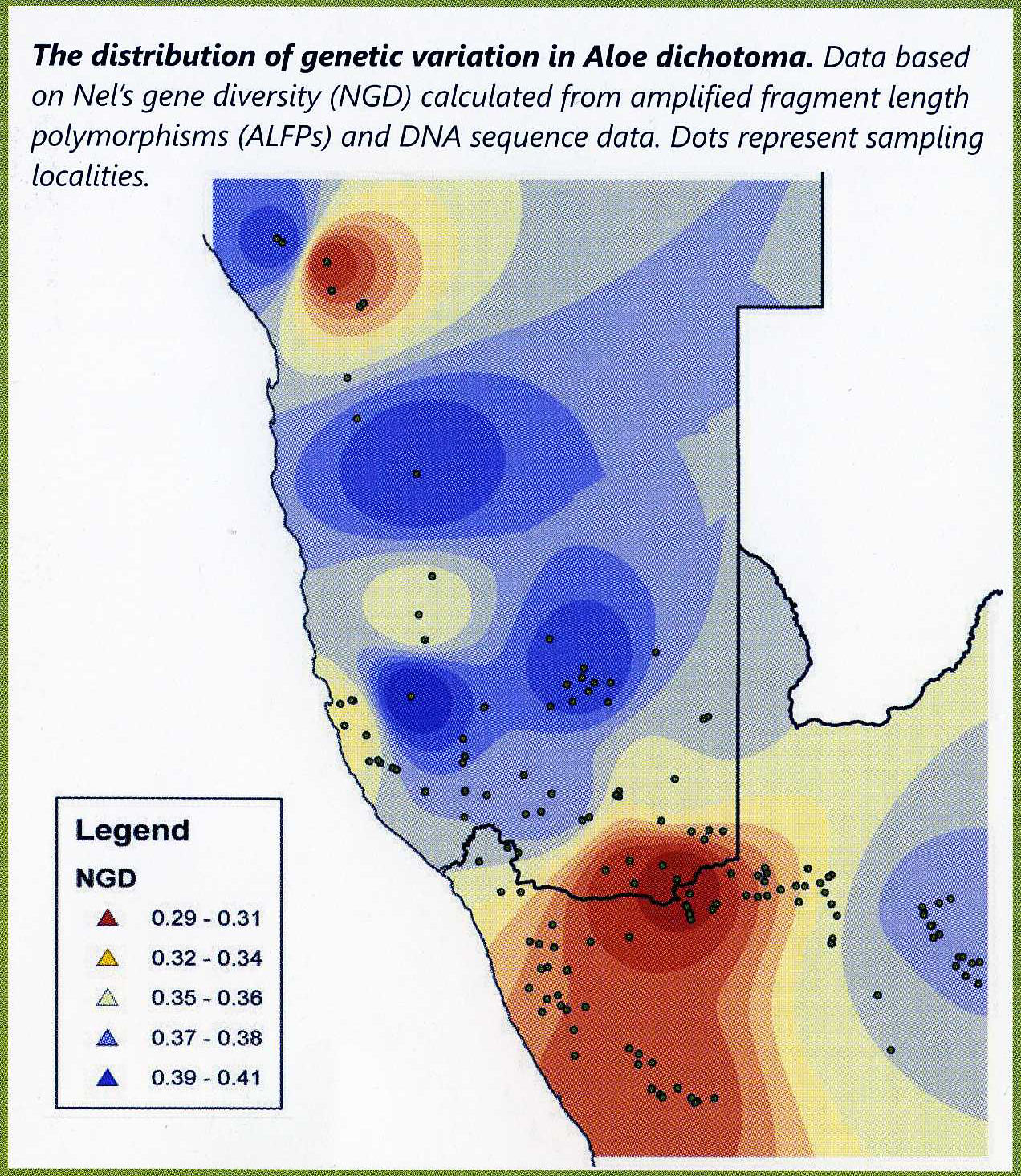Quiver tree genetics: A window on past distributions

Research during the last decade has shed light on various aspects of Aloidendron dichotomum (previously Aloe dichotoma, common name quiver tree) ecology, biogeography and climate change indicator species suitability. This iconic tree aloe is distributed between Calvinia in the Northern Cape in South Africa and the Brandberg Mountain in central-northern Namibia, following mainly rugged, mountainous areas. It is a highly photogenic and much-loved species, which is slow-growing, long-lived and often conspicuous as the only tree-like growth form in much of its arid range.

Despite the addition of the above studies to our knowledge of the species, our understanding of the age of populations, how populations are related to one another, and how they have shifted in the landscape in response to long-term climate change, remains poor. Genetic studies can help us answer some of these questions by revealing how genetically related different populations are and, through the use of molecular dating clocks, may tell us about how population size might have changed in the past. Some preliminary work has already been undertaken by the Biological Sciences’ very own Dr Jacqueline Bishop. Jacqueline’s research has shown that the oldest quiver tree populations (as determined by genetic diversity) are found in the central to northern parts of the range and at the Brandberg massif in the extreme north; these areas were likely to have acted as refugia during past periods of climatic change, preserving diversity in these populations.

Dr Bishop's work is about to be revisited and expanded by Randall Josephs, an MSc student working with Prof Terry Hedderson, Prof Timm Hoffman and Sam Jack in the Plant Conservation Unit. Randall and Sam recently conducted a hectic two and a half week distribution wide sampling trip in which leaf tissue was collected from numerous populations spanning the latitudinal distribution of the species. A rather old and neglected Land Rover threatened to scupper the journey on more than one occasion, but some tinkering and soothing words placated her enough to complete the more than 9000 km “round trip”.

Randall and Sam sampled more than 70 populations and collected several hundred samples. Processing these samples will be Randall’s next big task and will no doubt keep him busy for some time. In the meantime Sam will likely undertake a shorter follow-up trip to capture some more populations in the far south-eastern leg of the distribution and within the hyper-arid Sperregebiet in south-western Namibia. Randall intends to have the DNA sequencing done by later this year so that he can get stuck into the analysis. So check back with us in a few months and hopefully Randall will be able to enlighten us as to how the quiver tree has been shifting in the landscape over thousands of years!

~ Article written by Sam Jack and Randall Josephs
